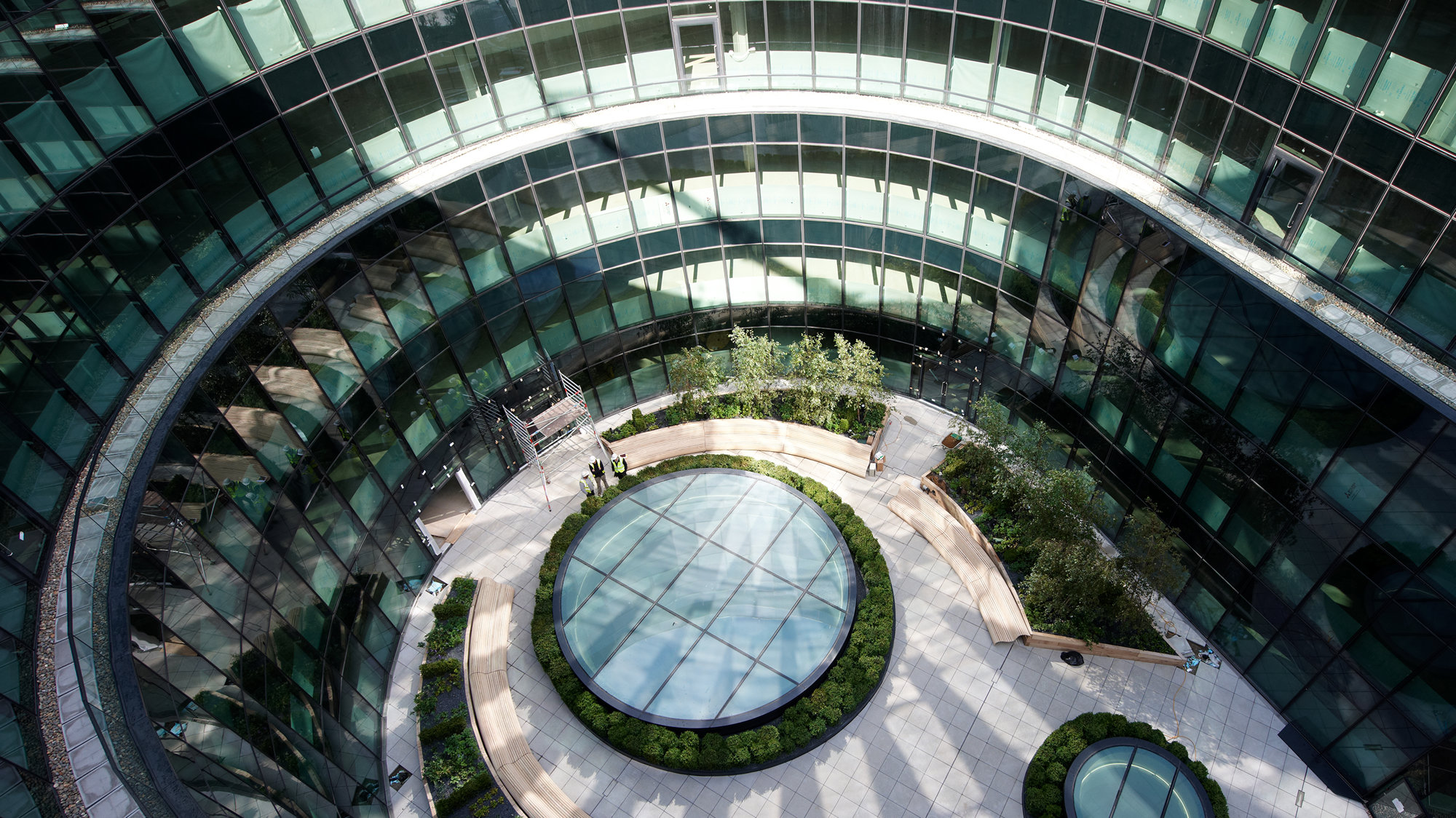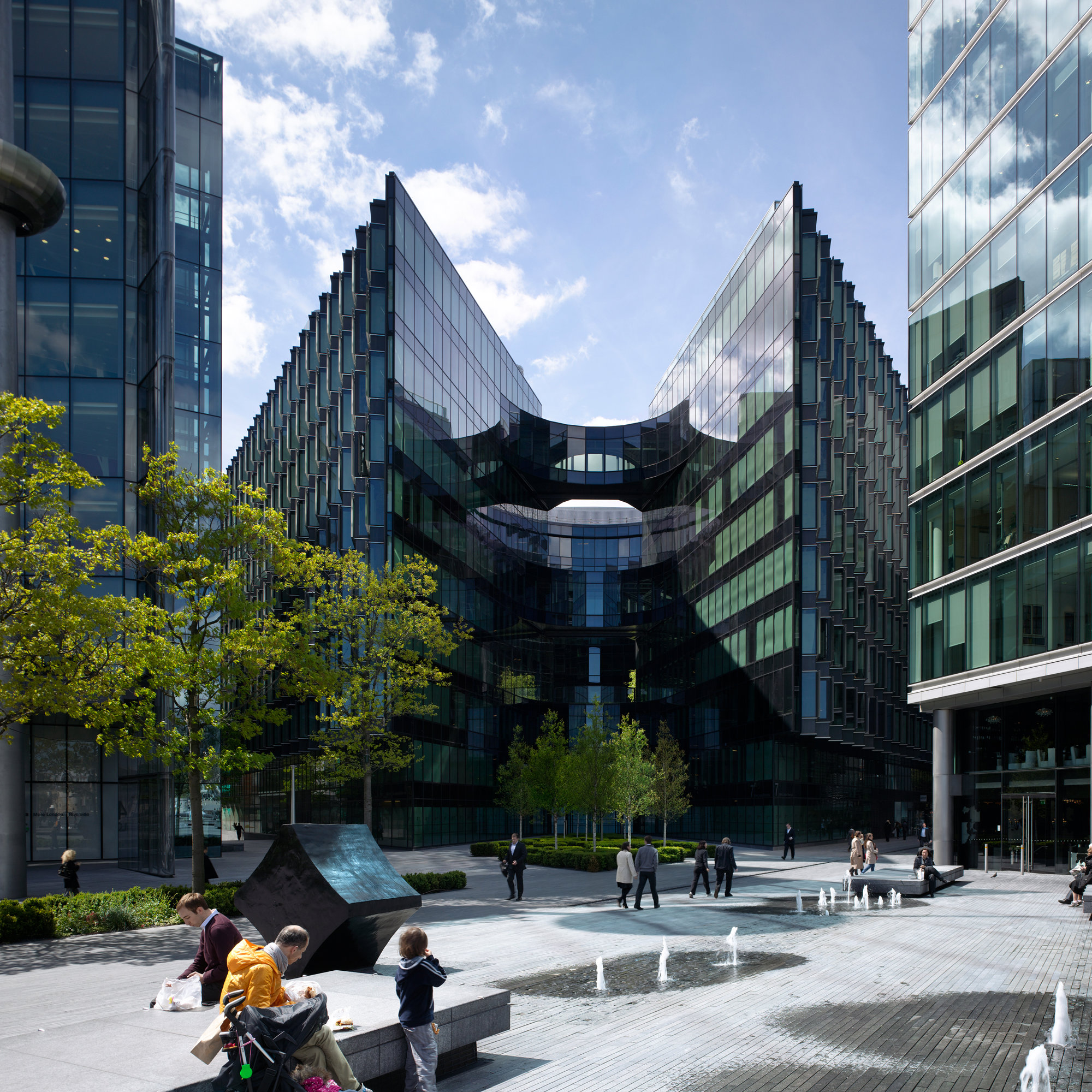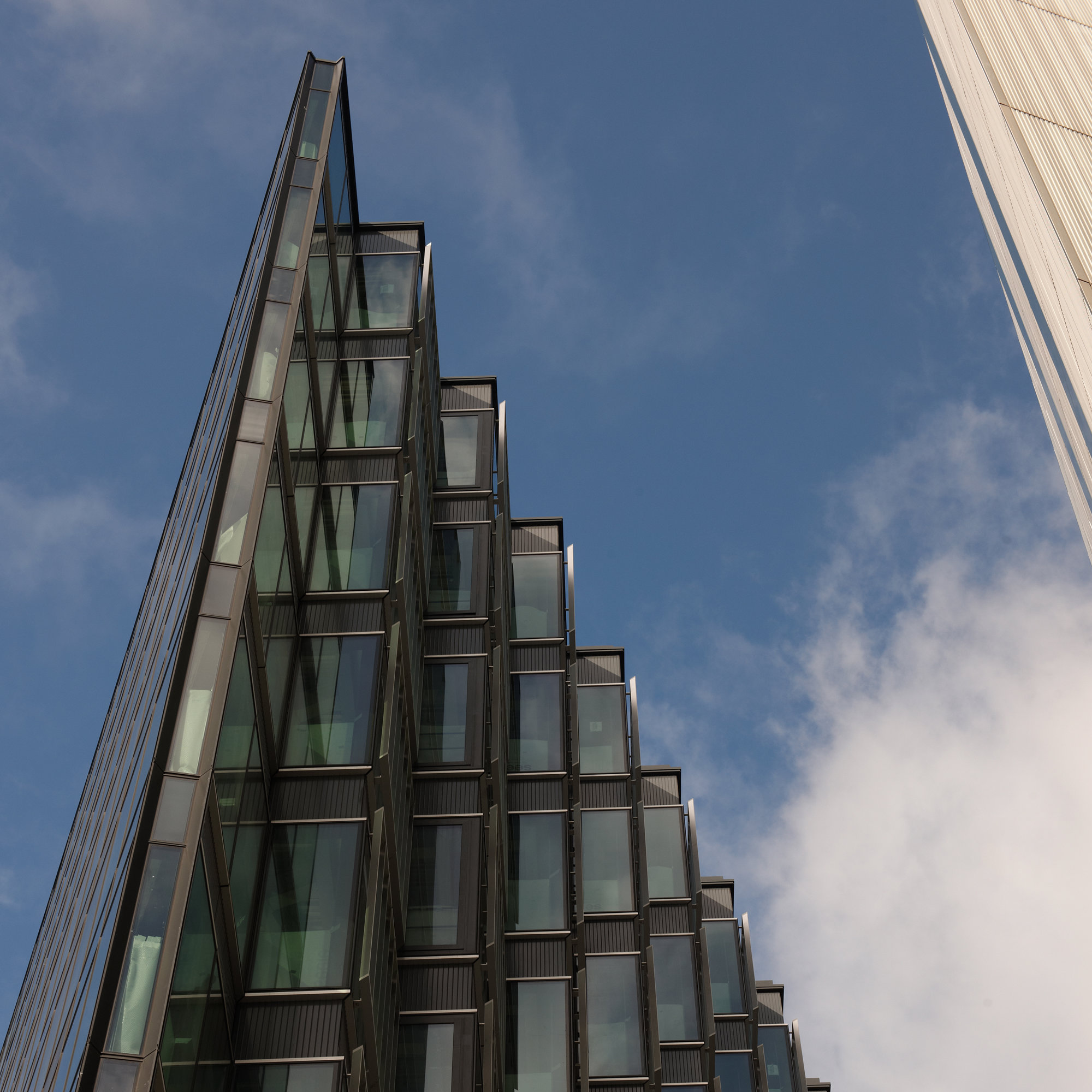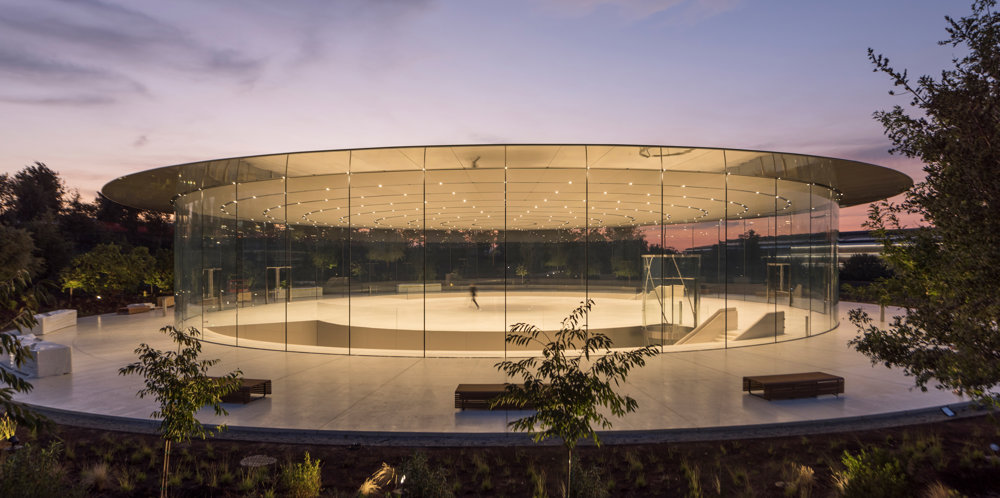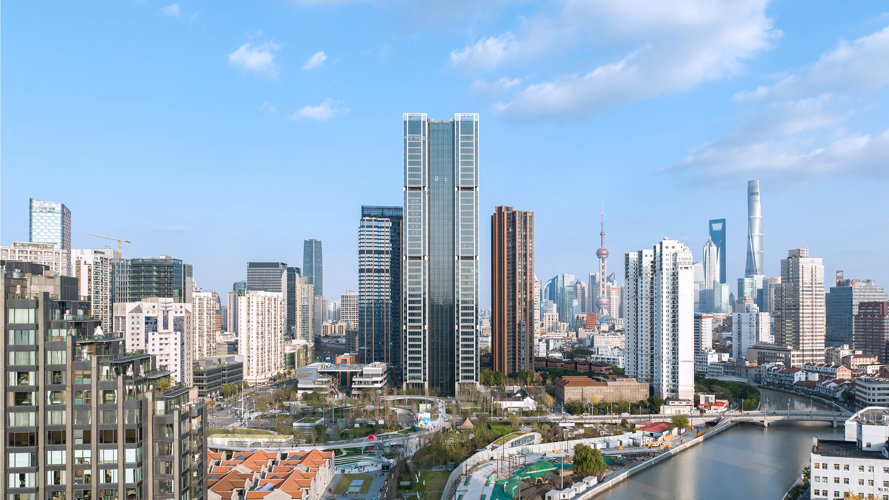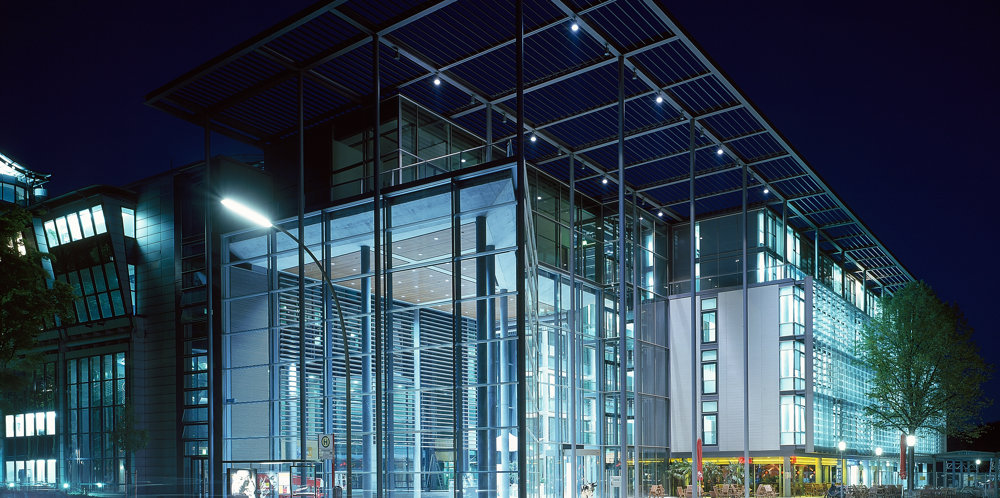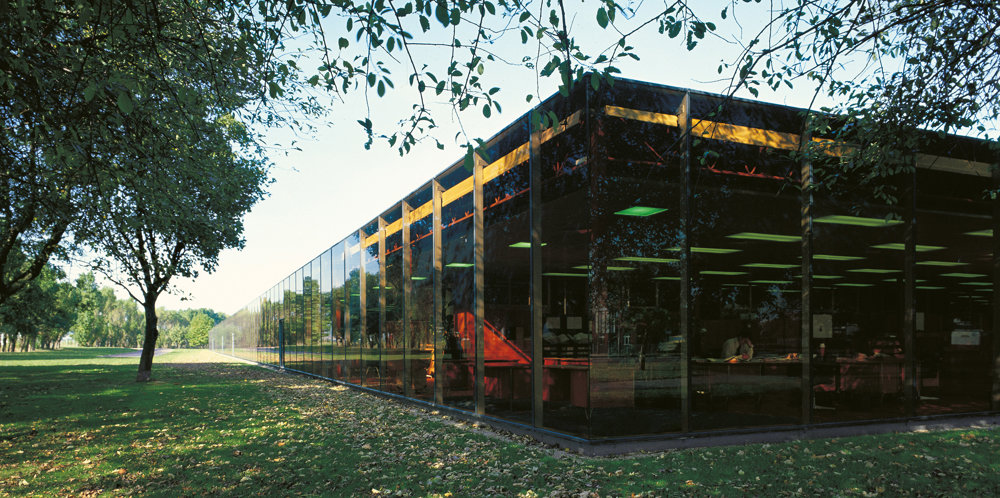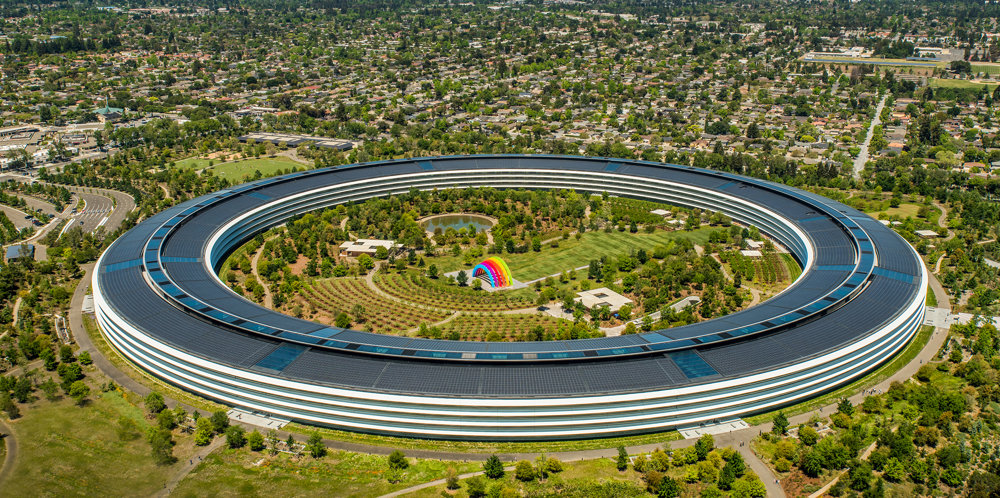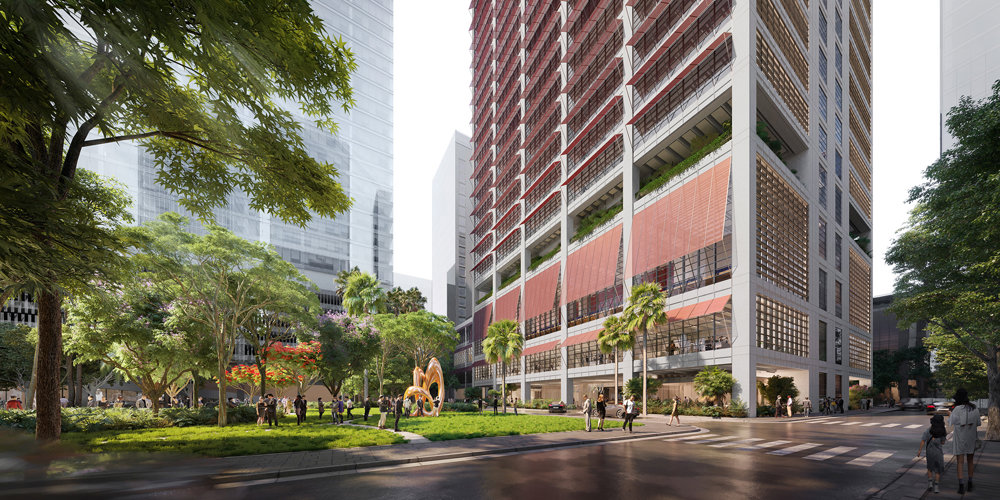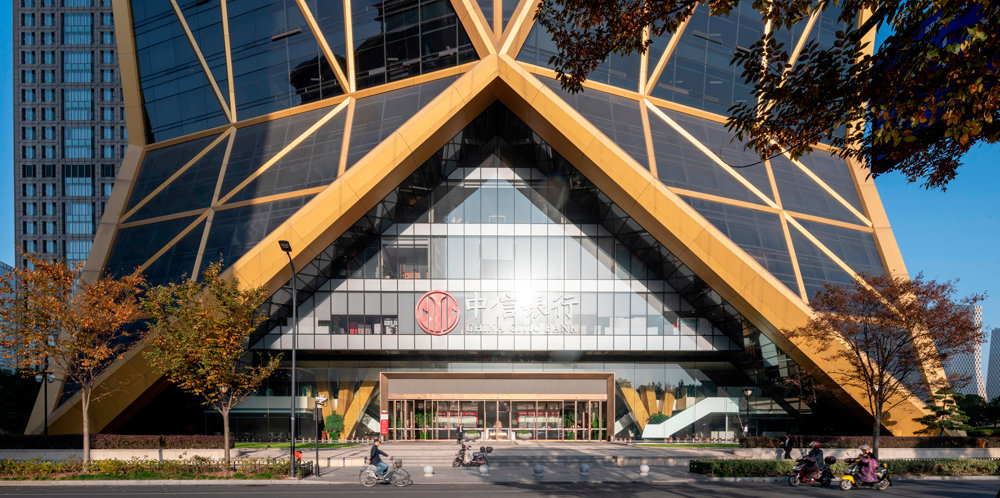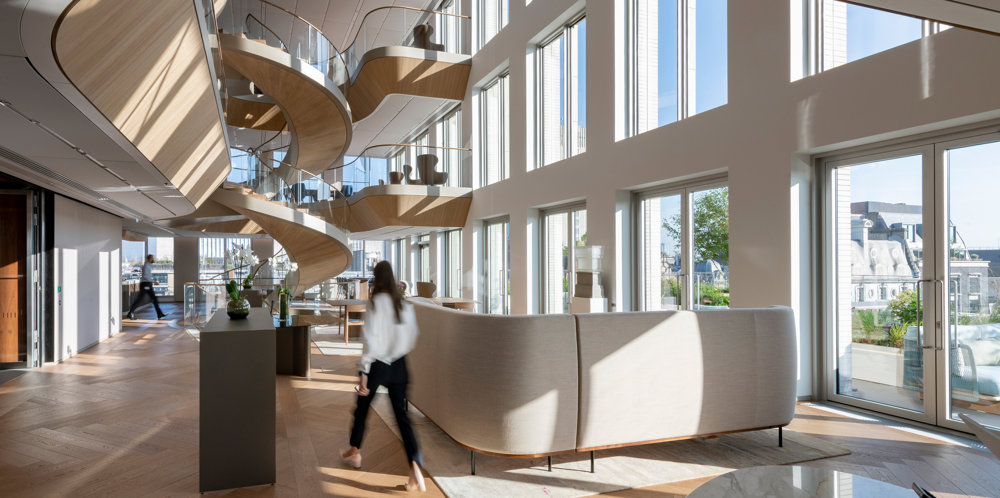7 More London Riverside is the final and largest building within the More London masterplan and provides a new 10-storey, sustainable headquarters for PricewaterhouseCoopers LLP. The building incorporates a range of energy saving strategies. In addition to a high-performance façade designed to offer shade and insulation, the building features solar hot water panels, green roofs and fully automated building management and metering systems. A Combined Cooling Heating & Power (CCHP) trigeneration plant provides a low carbon source of cooling, heat and power and has resulted in 55% less CO2 emissions than that required under the 2006 Part L2 Building Regulations.
Visible from all sides, the building does not have an obvious ‘front’ or ‘back’, so particular consideration has been given to the façade in assuming a distinctive presence within the masterplan. The zig-zag facades screen the interiors but allow daylight to penetrate the office floors. A sequence of external louvres animate the glazed facades, capturing and projecting light and colours inside and creating a sparkling effect on the building’s outer skin. To further maximise daylight and views, the building’s symmetrical wings open towards the river to reveal the open circular drum at its core. Three curved bridges, at levels 2, 5 and 8, connect the two wings, while the southern elevation drops to 7 storeys to respect the height of the buildings along Tooley Street.
A triple height internal atrium functions as a central plaza for the building’s occupiers – a space where the potential for art and the arrangement of lifts and bridges mirrors the external life of More London. Escalators ascend to a mezzanine level with client meeting rooms and entertaining facilities, while a bank of lifts transport staff directly from ground level to the office floors. Two skylights illuminate the space and provide a focus for the circular landscaped terrace above, which forms one of several roof gardens. As well as a green roof on the lower southern elevation, the building incorporates a rubble roof to simulate a habitat that attracted birds during wartime London, but has since been displaced by modern development.









